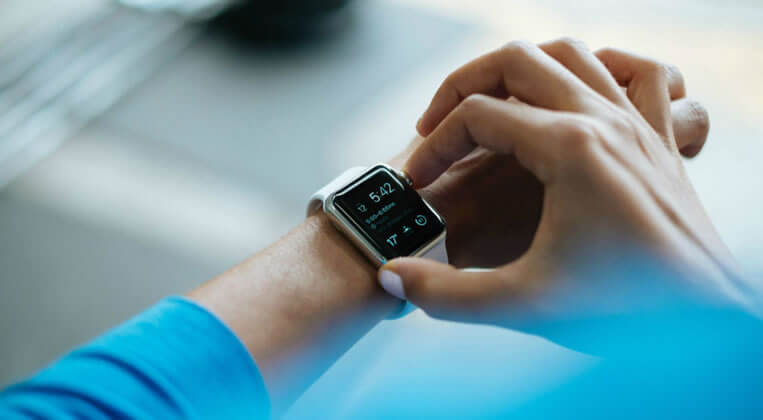Awareness and Treatment Choices for ADHD
ADHD is a hot topic.
My goal in writing this paper is not meant to diagnosis nor have the reader use it as a treatment guideline; however, it is intended to educate and encourage people to seek more information if they need it. This commentary is also not about our current culture and society which some think to be the root cause of ADHD. But I do encourage the reader to keep in mind that we live in a time of continuous electronic light and sound which in no small way has changed the functioning of our brains and how we spend our free time.
FINDING ATTENTION DEFICIT AND HYPERACTIVITY:
ADHD often starts in childhood but sometimes is not found until patients are in their teenage years, or even into adulthood. Many adults have come to my office seeking advice after reading and relating to an article about ADHD symptoms. The reason for the late discovery is that teachers and parents often blame overly hyperactive kids who do poorly in school for having behavioral problems.
Don’t get me wrong; behavior is a huge component, but merely scolding is usually not enough to correct the problem and can make the future situations worse. Also note that ADHD is an encompassing diagnosis, designed to fit a large population of patients.
So what does it mean to be diagnosed with ADHD?
After all, everyone can be hyper from time to time, and everyone can be inattentive from time to time. The difference from the majority of the population, versus the people with ADHD, is that the people with ADHD struggle with sitting still and concentrating every day.
This day-to-day struggle leads to problems with work performance and social engagements. The general population also mistakes the common mental and mood patterns behind ADHD as attention seeking and boredom, but in reality is a continual quest for external stimulation.
ATTENTION:
One of the first things I ask my patients who present to me is how their attention is. At times the response comes back right away—“it’s terrible!” But many times the question needs to be clarified. That’s because attention changes depending on the task at hand.
One way I can direct the questioning is to target reading comprehension.
- Can they sit and read something without their minds drifting?
- Can they remember what they just read?
- Can they interpret what they read and discuss it in a conversation?
Usually, the answer is something along the lines of, “I love Harry Potter, but I can’t remember what I read in my history book.” Yes, Harry Potter might be more interesting than the history book, but most people can still read a paragraph in the history book and report back the information. It’s finding out how difficult it is for someone to do that, which might lead to a diagnosis. It comes down to how much stimulation a person needs for the concentration and comprehension to happen.
Some kids and teens with ADHD tend to do better with math versus reading; math requires you to be more active with pencil or calculator—you are doing something at the moment, sitting there figuring things out. Thus there is more mental stimulation.

Video games and sports:
Even though the ADHD patient might struggle with reading comprehension, they can understand and comprehend what is happening with video games and sports. Why? Because the games are more stimulating than the reading assignment, thus the level of concentration can be maintained.
I want to be clear about this, I am not talking about just being bored, I am referring to the difficulty of staying focused without external stimulation. As mentioned this commentary is not about the cause of ADHD, but if it were a massive bulk would be dedicated to screen time and how we as a society have programmed our brains for greater amounts of stimuli.

Speaking of external stimuli, a simple clue for ADHD might be the amount of coffee a person is consuming during the day. Does the caffeine make a difference in concentration and behavior? It’s not 100%, and some people are more caffeine sensitive than others, but the stimulation from the coffee is usually enough to help bump up concentration levels. Caffeine might even appear to make some patients calmer.
HYPERACTIVITY:
Some common questions:
- Can the patient sit still for long periods at a time?
- If they are sitting still how restless are they?
- Are they up in everyone’s business?
People with hyperactivity problems have a hard time sitting still. Often they will be sitting at their desk working away when their thoughts begin to wonder, and they find themselves up and across the room without even knowing it. Often they are up bugging someone else to help make their time more stimulating.
The ability not to sit still is for the same reason as the lack of attention.
It’s due to a lack of stimulation. Being up and moving around is a form of self-medication. We hear the term self-medication a lot when you talk about alcohol and other drugs, but you may not have considered that a movement is also a form of self-medication. Getting up, being active, is self-stimulating and helps build up the brain chemical adrenaline. Most people on a day-to-day basis do not get enough physical activity which can lead to restlessness.

Adrenaline, or epinephrine, is the chemical in our brain that keeps us focused, self-motivated, and stimulated. One theory is that the ADHD population has trouble making it well on their own, and thus often end up looking for it in other places. That is why you might find your teenager rolling down a hill in a shopping cart, jumping off the roof onto a trampoline, or jumping off a cliff into a lake—they really might be an adrenaline jockey, but it’s also a quest for stimulation.
Although not accurate for everyone, other mood and mental symptoms might be present. These additional symptoms may also require additional attention.
- Anxiety: Whether inherent in their personality, or socially induced from being asked to do complicated tasks.
- Insomnia: Compounded with stress which can lead to difficulty getting to sleep or staying asleep.
- Compulsiveness: Difficulty with waiting, but also finding success in routines and following task lists.
ADHD TREATMENT OPTIONS:
The vast majority of pharmacological therapies, as you may know, are stimulants. By this point, you also know the reason that is. However, compared to coffee, behind-the-counter stimulants are much stronger, last longer, and have some serious side effects, including appetite supersession. Don’t get me wrong, for the right person these are life changing drugs, and without them, some people cannot function. But everything in medicine is on a spectrum, and some people wish to avoid these medications and go looking for other treatment options.
Amino acid therapy
Amino acid therapy works well in the short term. Like many medicines, our body can start to develop a tolerance to the treatment. All of a sudden something that was working stops working, and you need to take more of it to for the supplements to work. However, due to cost and an increase chance of side effects, taking more is not always a good option. When it comes to amino acids, I suggest reserving them for special times, like studying for an exam or trying to finish a major report.

Food as medicine
Lots of studies have found that cleaning up the diet helps to reduce ADHD symptoms. Naturopaths have established a healthy gut and mind connection, or rather an unhealthy gut can lead to a sick mind. Removing highly processed foods is a good first start. Also, finding food sensitivities seems to help significantly decrease symptoms. A short-term elimination diet can determine food sensitivities. The patient can then reintroduce foods slowly over time to assist in determining which foods are the greatest culprits. The success of doing this is remarkable and life changing, and it doesn’t mean the patient has to avoid that particular food forever. It just means that they know what foods will make their day or week better, and what foods will make their day or week worse.
Supplements
Historically the soil that we grow our food in was richer in vitamins and minerals, and the nutrition our livestock received was more nutritious when compared to modern farming practices. Thus it’s hard to get enough of everything we need from our diet. For example, critical cofactors that build good brain chemistry and healthy fatty acids that form hardy neural tissue are easier to get these days in pill form than from a salad. Also of note, some minerals that are always lacking in the American diet can help reduce or eliminate some symptoms, including anxiety and insomnia.
Behavior
My last point about treatment is behavior. Finding motivation to change is just as important, if not the most important part of treating ADHD. No magic pill is going to make patients care about their jobs, their homework, or their health. They still have to want to put in the effort to improve their daily performance. Patients will need to learn life strategies and organizational skills to keep them on track. Some subjects will remain annoying, but patients can learn to set aside specific times for reading and focus on recall strategies. Changing behavior might also mean learning to limit screen time, learning to go outdoors more often, and increasing daily physical activity.

Non-pharmacological treatment of ADHD is available and a viable option for a lot of people. Treatment options are always focused on the whole person and not just one aspect of someone’s life. So if you, or someone you know needs help, know that putting off treatment tends to make things harder in the future. In the end, it might require a behind-the-counter drug, but there are many other things to try first.
